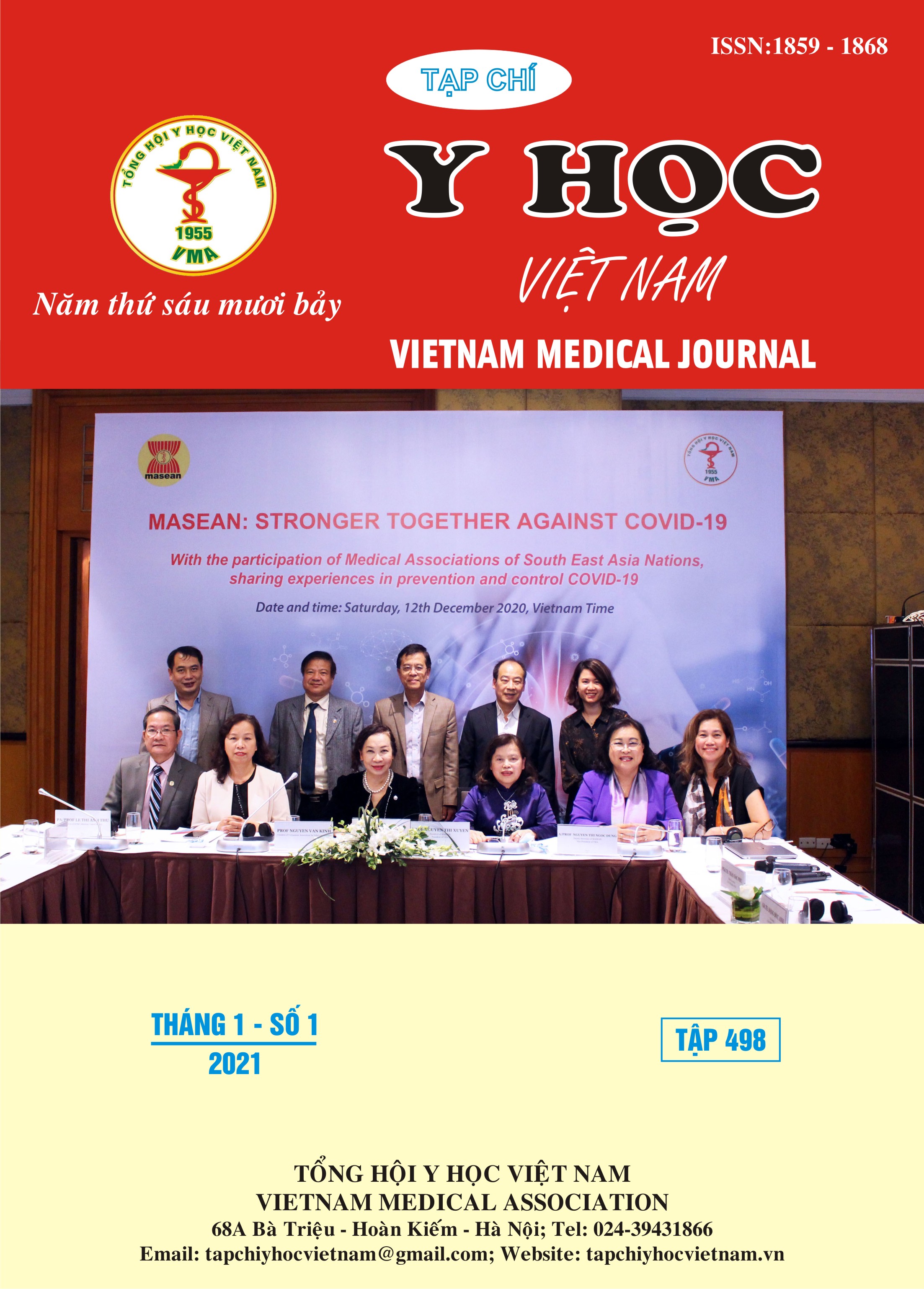EVALUATION OF THE MODEL FOR END STAGE LIVER DISEASE (MELD) SCORE, THE MELD SODIUM SCORE IN CIRRHOSIS PATIENTS WITH COMPLICATIONS
Main Article Content
Abstract
Aims: To evaluate the value of the MELD, MELD Na score in patients with cirrhosis and its complications. Subjects and methods: The prospective descriptive study was conducted at Department of Gastroenterology Bach Mai Hospital from July 2019 to March 2020. Research population: patients werediagnosed with cirrhosis and complications. Results and conclusion: There were 387 patients were recruited in our study. Mean MELD, MELD Na scores in the group of patients with GI bleeding were (13.15 ± 5.15), (15.05 ± 5.8), respectively which were lower than the group of patients without GI bleeding (21.03 ± 7.06), (23.78 ± 7.51); p <0.001 and it is not significant to anticipate complications with AUC <0.5. Mean MELD, MELD Na scores in the group of patients with hepatic encephalopathy were (21.16 ± 7.85), (23.76 ± 7.94), respectively, which were higher than the group of patients without hepatic encephalopathy (12.93 ± 4.57), (14.85 ± 5.46); p <0.001 and it’s slight significance to predict hepatic encephalopathy complications with AUC <0.7. Mean MELD, MELD Na scores in the group of patients with spontaneous bacterial peritonitis (SBP) were (18.06 ± 6.82) and (20.8 ± 7.32), respectively, which were higher than the group of patients without SBP (14.15 ± 6.15), (16.11 ± 6.82); p <0.001 and this is of significance to predict SBP complications with AUC were 0.701 and 0.725. Mean MELD, MELD Na scores in the group of patients with hepatorenal syndrome (HRS) were (27.94 ± 9.13) and (30.37 ± 8.39), which were higher than the group of patients without HRS (14.08 ± 5.56), (16.13 ± 6.38); p <0.001 and it is of significance to anticipate HRS complications with AUC were 0.995 and 0.901. Mean MELD, MELD Na scores in the group of patients with two or more complications were (20.23 ± 8.89) and (22.55 ± 8.69), respectively which were higher than the group of patients with only one complication (13.53 ± 5.04), (15.54 ± 6.04); p <0.001 and this is of significance to predict number of complications with AUC were 0.744 and 0.739, respectively.
Article Details
Keywords
MELD, MELD Na, cirrhosis with complications
References
2. Nguyễn Thị Linh. Nghiên cứu mức độ nặng bệnh nhân xơ gan tại khoa tiêu hóa bệnh viện Bạch Mai năm 2016 thông qua điểm MELD và Child Pugh. Luận văn thạc sỹ Y học, Đại học Y Hà Nội; 2017.
3. Nguyễn Trọng Nhân. Nghiên cứu áp dụng chỉ số MELD và Maddrey trong tiên lượng nặng ở bệnh nhân xơ gan do rượu và bệnh nhân xơ gan do rượu có nhiễm virus viêm gan B. Luận văn thạc sỹ Y học, Đại học Y Hà Nội; 2018.
4. Londoño M-C, Cárdenas A, Guevara M, et al. MELD score and serum sodium in the prediction of survival of patients with cirrhosis awaiting liver transplantation. Gut. 2007; 56(9):1283-1290.
5. Flores-Rendón AR, González-González JA, García-Compean D, Maldonado-Garza HJ, Garza-Galindo AA. Model for end stage of liver disease (MELD) is better than the Child-Pugh score for predicting in-hospital mortality related to esophageal variceal bleeding. Ann Hepatol. 2008; 7(3):230-234.
6. Yoo HY, Edwin D, Thuluvath PJ. Relationship of the model for end-stage liver disease (MELD) scale to hepatic encephalopathy, as defined by electroencephalography and neuropsychometric testing, and ascites. Am J Gastroenterol. 2003; 98(6):1395-1399.
7. Huo T-I, Lin H-C, Wu J-C, et al. Proposal of a modified Child-Turcotte-Pugh scoring system and comparison with the model for end-stage liver disease for outcome prediction in patients with cirrhosis. Liver Transplant Off Publ Am Assoc Study Liver Dis Int Liver Transplant Soc. 2006;12(1):65-71.
8. Schepke M, Appenrodt B, Heller J, Zielinski J, Sauerbruch T. Prognostic factors for patients with cirrhosis and kidney dysfunction in the era of MELD: results of a prospective study. Liver Int Off J Int Assoc Study Liver. 2006;26(7):834-839.


